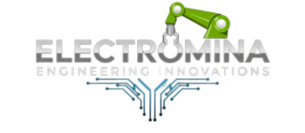Introduction
In the world of PCB (Printed Circuit Board) assembly, two primary techniques dominate the manufacturing process: Surface Mount Technology (SMT) and Through-Hole Technology (THT). Both SMT and THT are crucial to modern electronics, yet they have unique applications, advantages, and limitations. Understanding the differences between them helps engineers, designers, and businesses choose the best approach for their projects.
What is Surface Mount Technology (SMT)?
SMT allows electronic components to be mounted directly onto the PCB’s surface without the need for drilled holes. This technique became popular in the 1980s and has since transformed PCB manufacturing.
- Advantages of SMT:
- Compact Design: SMT allows for smaller components, enabling more compact, lightweight devices.
- Faster Production: Automated machines can place SMT components quickly, increasing production efficiency.
- Cost-Effective: SMT is typically more affordable due to lower labor costs and faster assembly times.
- Applications of SMT: SMT is widely used in consumer electronics, telecommunications, and compact, high-performance devices where space is a premium.
What is Through-Hole Technology (THT)?
Through-Hole Technology involves inserting component leads through pre-drilled holes on the PCB and soldering them on the opposite side. Although THT has largely been replaced by SMT in mass production, it remains valuable for specific applications.
- Advantages of THT:
- Strong Mechanical Bond: THT offers a more secure attachment, ideal for components subjected to physical stress.
- Durability: THT is preferred in industries where reliability is critical, such as aerospace and automotive.
- Applications of THT: THT is common in high-reliability applications where components must endure heat, vibration, and other stresses.
Comparing SMT and THT
| Feature | SMT | THT |
|---|---|---|
| Component Size | Smaller components, more compact boards | Larger components |
| Assembly Speed | Faster, automated processes | Slower, more manual |
| Strength | Lower mechanical strength | Higher mechanical strength |
| Cost | Generally lower | Often higher due to labor |
| Application Areas | Consumer electronics, telecoms | Aerospace, automotive, military |
Which Technology Should You Choose?
The choice between SMT and THT depends on the project requirements. If space is limited and cost efficiency is a priority, SMT may be the right fit. However, for projects demanding durability and mechanical stability, THT is the better choice. For mixed-use applications, a combination of both technologies can offer the best of both worlds.
Conclusion
Both SMT and THT play vital roles in modern electronics manufacturing. SMT is preferred for lightweight, cost-effective applications, while THT remains essential for robust, reliable components. At ElectroMina, we offer both SMT and THT solutions tailored to your project needs, ensuring quality, efficiency, and reliability in every design.



